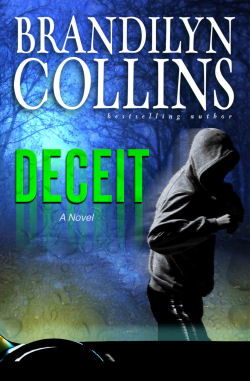|
This
month we continue our look at George Polti’s The Thirty-Six
Dramatic Situations. (If you missed Part 1, please read it
here before continuing.)
27. Discovery of a
Loved One’s Dishonor. Discoverer, guilty one. Presents a
similar struggle as to that in Sacrifice of a Loved One, but without
the attraction of a high ideal. Here, the ideal is replaced with shame.
Example: Redeeming Love. (The wife, Angel, returns
to her prostitution. However, this book also presents other situations,
such as #2, Deliverance.)
28. Obstacles to Love.
Lovers, an obstacle. This is a situation present in every modern
romance. Love can be prevented by inequalities, family, and myriad
other circumstances. Polti apparently was none too fond of this
situation—and would be appalled at the number of romances selling
today. “Whether the piece treats of sociology, of politics, or
religion, of questions of art, of the invention of a gun, of the
discovery of a chemical product, of it matters not what—a love story it
must have; there is no escape. Savants, revolutionists, poets, priests
or generals present themselves to us only to fall immediately to
love-making or match-making. It becomes a mania. And we are asked to
take these tiresome repetitions seriously!” Methinks many an avid
romance reader would disagree. Example: Pretty Woman.
29. An Enemy Loved.
Beloved enemy, lover, hater. This one can cross into Obstacles to Love.
Example: Romeo and Juliet.
30. Ambition.
Ambitious person, thing coveted, adversary. Can lead to Daring
Enterprise, Enmity of Kinsmen, or Rivalry of Kinsmen. Example: Jerry
McGuire.
31. Conflict with a God.
Mortal, immortal. This is the situation of most ancient treatment, upon
with many of the Greek myths are founded. Modern example: Rosemary’s
Baby.
32. Mistaken Jealousy.
Jealous one, object of jealousy, supposed accomplice, cause or author
of mistakes. The last element is either not personified or is
personified as a traitor. Example: Othello.
33. Erroneous Judgment.
Mistaken one, victim of mistake, cause or author of mistake, guilty
person. Includes false suspicions, accusation of innocent. Sometimes
the guilty purposely sheds suspicion on another. Example: Body
Heat.
34. Remorse.
Culprit, victim or sin, interrogator. Includes false guilt. Example: Crime
and Punishment.
35. Recovery of a Lost
One. The seeker, one found. Includes recovery of a stolen
child, of one wrongly imprisoned, etc. Examples: The Man in
the Iron Mask, The Deep End of the Ocean.
36. Loss of Loved Ones.
Kinsman slain, kinsman spectator, executioner. Example: Love
Story.
Now, if there are only
thirty-six different basic premises, what makes stories unique? The
nuances and differences lie in these factors:
1. Depth and
uniqueness of the ties of friendship/kinship between characters. Look
at #32, Mistaken Jealousy, for example. A mother-daughter story in
which the daughter is jealous because she believes her widowed mother
is showing some suitor more attention than her; it is a very different
story from Othello, where two lovers are involved.
2. Degree
of free will and conscious knowledge toward the end the characters are
pursuing. This includes, but isn’t limited to, the conscious
desire versus unconscious desire story. A character may be pursuing
Ending A, while really what he or she wants is Ending B. In this
scenario, the story premise can be based on two different
situations—one representing the conscious pursuit and one representing
the unconscious desire.
|
3. The
energy of the
actions in the situation. For example, murder can be
diminished to a desire to murder, or even to only a blow or a too-hasty
word. Or it can be multiplied and aggravated.
4. Instead of two
adversaries, one or both can be substituted with a group of characters
focused on the same desire but reflecting that desire under a different
light.
5. The situations are
combined, putting two, three, four, any number of them
together. One situation can lead logically to another, or the character
faces more than one at a time, or one character faces certain
situations while another character faces others, etc. The possibilities
are endless.
In his conclusion, Polti defends
himself and his thirty-six situations system, saying he hasn’t tried to
diminish art or put it into a box (my modern paraphrase of his rather
antiquated language). Rather, he has shown its various forms so that
artists can mold and combine as they choose, resulting in endless
stories. We can use Polti’s system both to understand others’
stories—figuring out what situations they’re based upon and where the
uniqueness lies—and in building our own stories.
One helpful exercise: Take any
book you’ve read recently, or any movie you’ve watched, and discern its
situations. And then ask yourself: How did combining these two
particular situations (or three, or four) change each of them?
Take the biblical story of
Esther. It’s founded on #1, Supplication—twice. First, Esther’s
relative, Mordecai, begs her to save the lives of her people. Then,
Esther goes before the king to beg for the Jews. But there’s also an
element of #7, Falling Prey to Cruelty or Misfortune. This is the
situation that leads to the need for supplication in the first place,
because Esther’s people are about to be slaughtered, thanks to nasty
ol’ Haman. And there’s an element of #21, Self-Sacrifice for Kindred,
in that Esther knows the king may kill her for coming into his presence
unannounced (people didn’t just “drop in” on the king). So in the main
plot, we have #7 leading to #1 twice, the second time being mixed with
#21. Already you can see how some of the five ways listed above for
bringing uniqueness into the story are being used (i.e., depth of
kinship ties).
Next month, in our conclusion of
discussing The Thirty-Six Dramatic Situations,
we’ll look at how they can be used to create twists in your stories.
A reprint of The Thirty-Six
Dramatic Situations is available on Amazon for $15.95.

 |